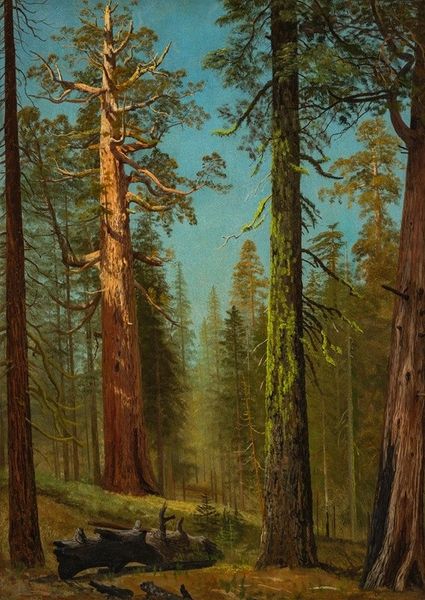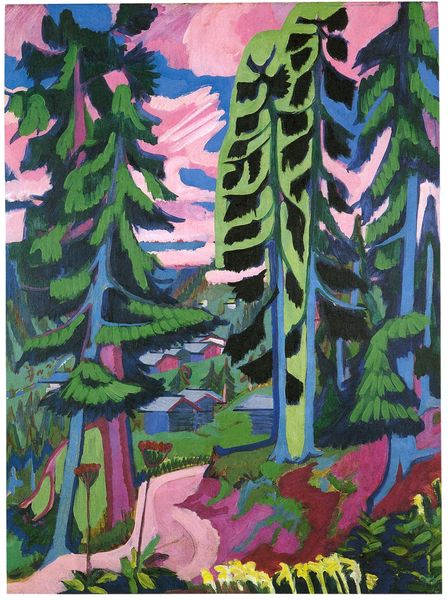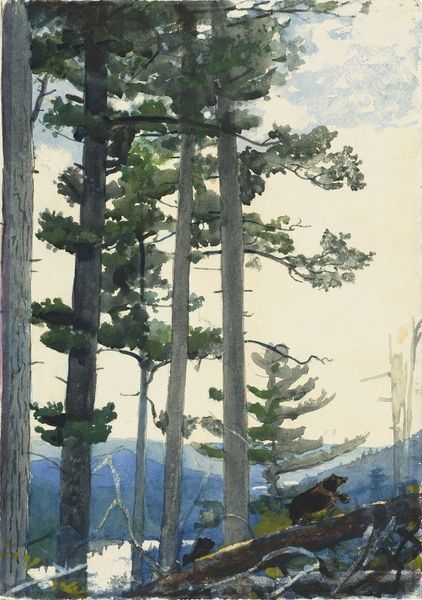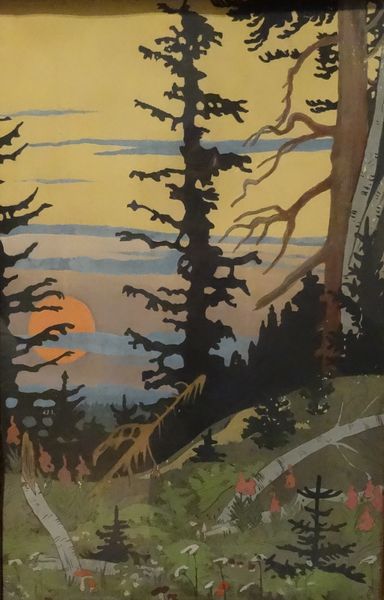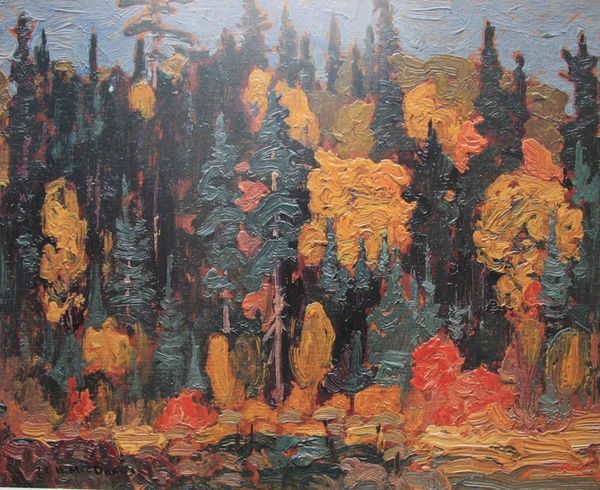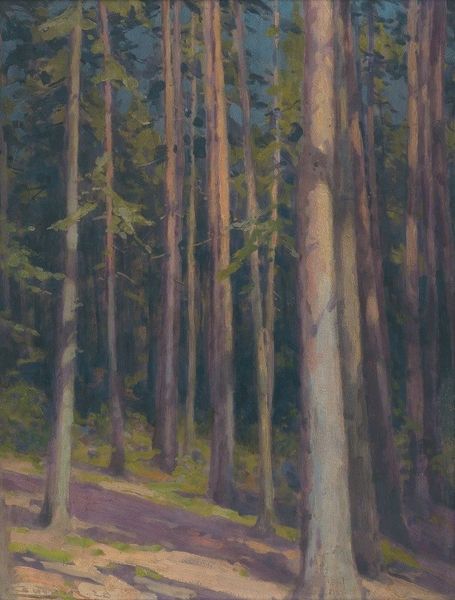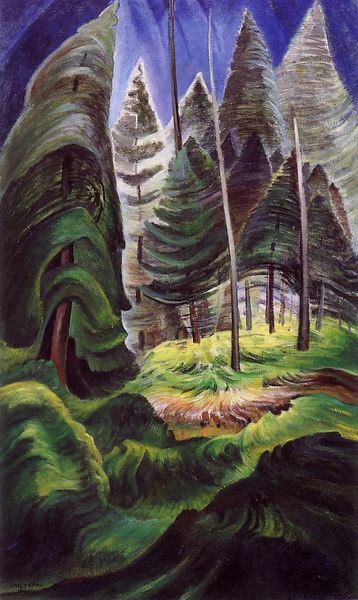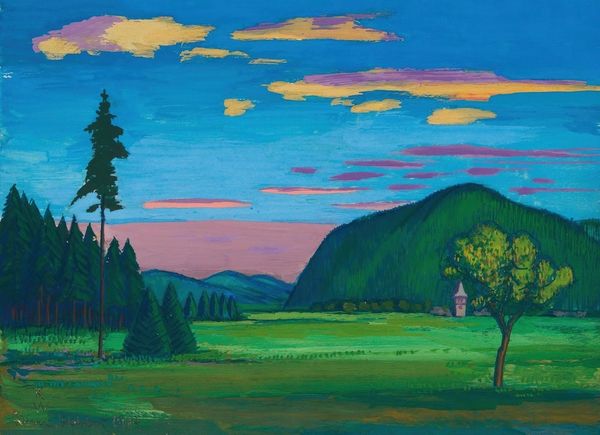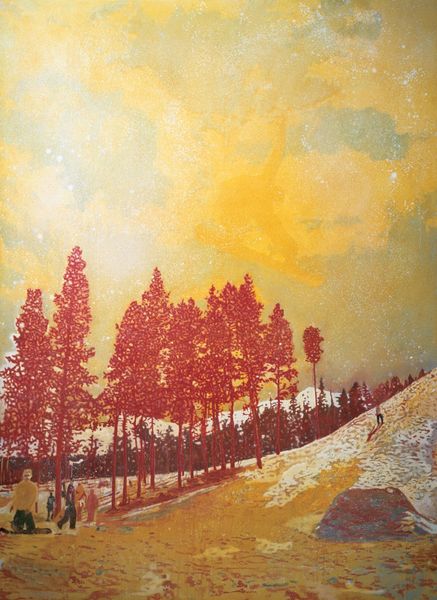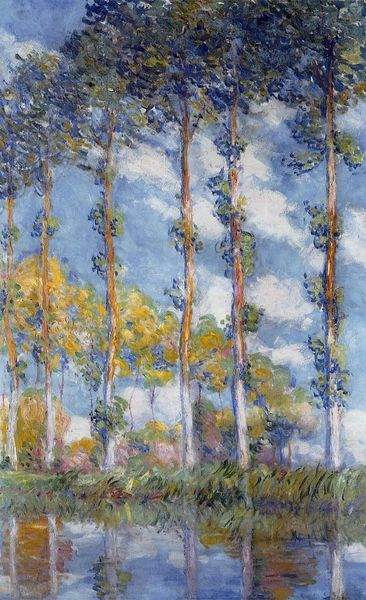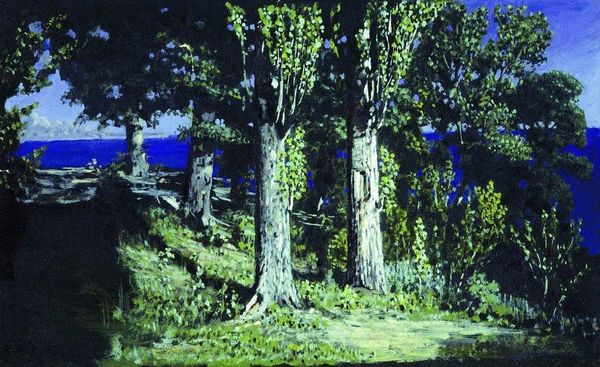
Copyright: Public domain
Editor: This is "Late Afternoon Silence," an oil painting created in 1939 by Arkady Rylov. It gives me a feeling of standing right in the middle of a forest, looking up at the sky. What do you see in this piece? Curator: Looking at "Late Afternoon Silence" through a historical lens, it's intriguing how Rylov chooses to depict nature in 1939, just before the outbreak of World War II. Consider how artists during that time often responded to growing social and political unrest. Editor: So, the landscape wasn't just about nature anymore? Curator: Precisely. Rylov, by focusing on the serene beauty of the forest, may be offering a form of escapism or a commentary on the enduring strength and peace found in nature amidst impending chaos. How might contemporary viewers, accustomed to different modes of landscape painting, interpret this today, do you think? Editor: I suppose today we might look for a more critical view, questioning our relationship with nature or perhaps even its destruction, while this painting presents a more harmonious ideal. Curator: Yes, and think about the Soviet context too. Was this romanticized view of nature a reflection of Soviet ideals about the relationship between people and land? Was it also potentially obscuring other narratives? It would be useful to also analyse what types of landscapes where not depicted in official Soviet art at that moment. Editor: That's a perspective I hadn't considered. I see how the painting is intertwined with the political context of the time. Curator: Absolutely, and by understanding that connection, we get a much richer understanding of the work. This artwork demonstrates that on first glance it's an idyllic scene but actually reflects how art operates within the culture. Editor: It’s like unlocking another layer of meaning within this landscape, making the silence in "Late Afternoon Silence" speak volumes!
Comments
No comments
Be the first to comment and join the conversation on the ultimate creative platform.
